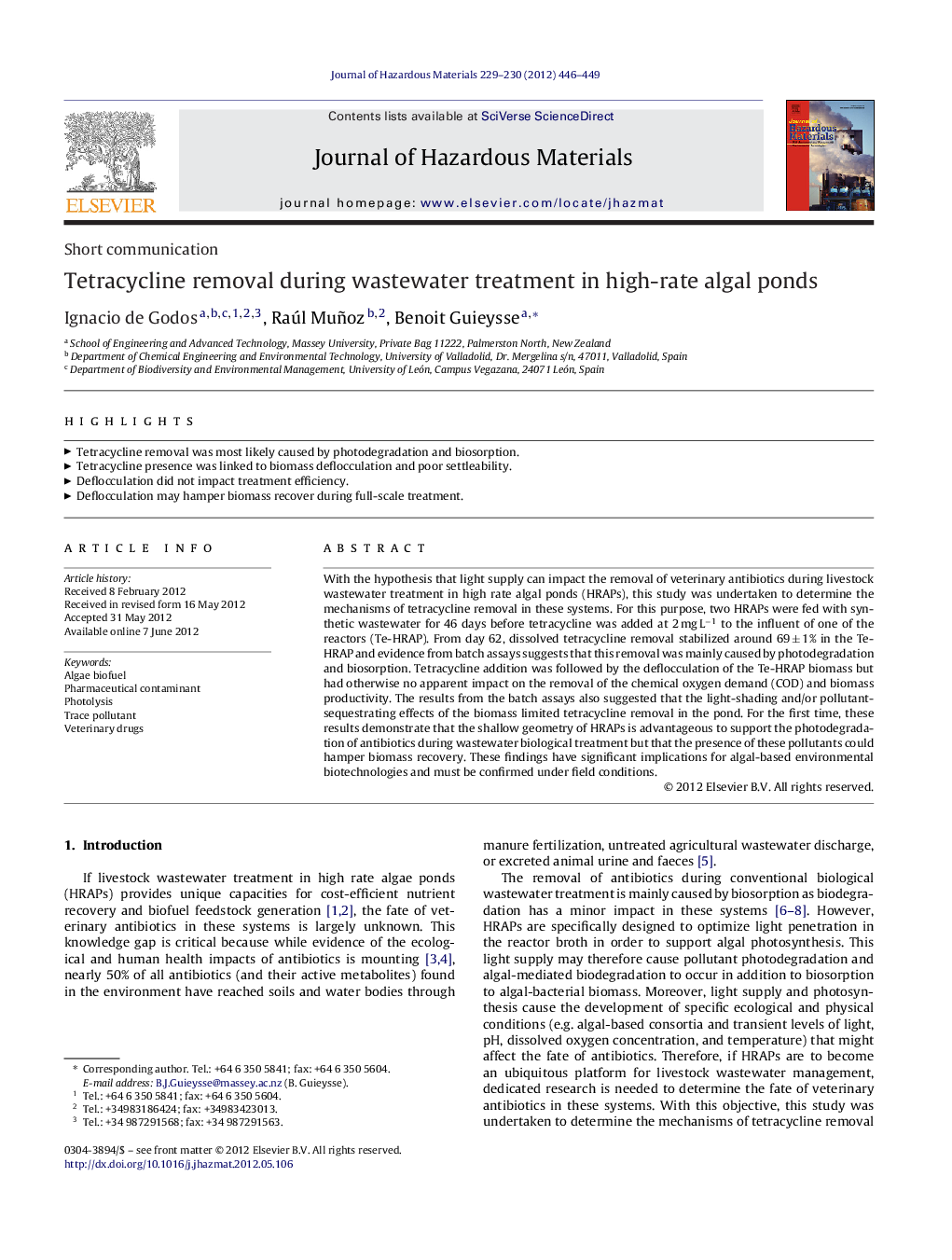| کد مقاله | کد نشریه | سال انتشار | مقاله انگلیسی | نسخه تمام متن |
|---|---|---|---|---|
| 577958 | 1453115 | 2012 | 4 صفحه PDF | دانلود رایگان |

With the hypothesis that light supply can impact the removal of veterinary antibiotics during livestock wastewater treatment in high rate algal ponds (HRAPs), this study was undertaken to determine the mechanisms of tetracycline removal in these systems. For this purpose, two HRAPs were fed with synthetic wastewater for 46 days before tetracycline was added at 2 mg L−1 to the influent of one of the reactors (Te-HRAP). From day 62, dissolved tetracycline removal stabilized around 69 ± 1% in the Te-HRAP and evidence from batch assays suggests that this removal was mainly caused by photodegradation and biosorption. Tetracycline addition was followed by the deflocculation of the Te-HRAP biomass but had otherwise no apparent impact on the removal of the chemical oxygen demand (COD) and biomass productivity. The results from the batch assays also suggested that the light-shading and/or pollutant-sequestrating effects of the biomass limited tetracycline removal in the pond. For the first time, these results demonstrate that the shallow geometry of HRAPs is advantageous to support the photodegradation of antibiotics during wastewater biological treatment but that the presence of these pollutants could hamper biomass recovery. These findings have significant implications for algal-based environmental biotechnologies and must be confirmed under field conditions.
► Tetracycline removal was most likely caused by photodegradation and biosorption.
► Tetracycline presence was linked to biomass deflocculation and poor settleability.
► Deflocculation did not impact treatment efficiency.
► Deflocculation may hamper biomass recover during full-scale treatment.
Journal: Journal of Hazardous Materials - Volumes 229–230, 30 August 2012, Pages 446–449